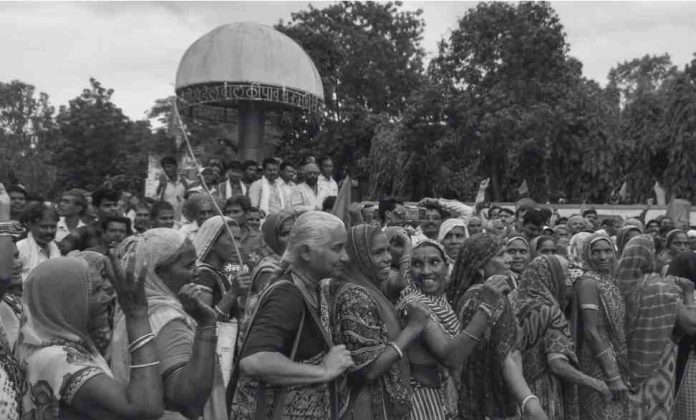The case of Narmada Bachao Andolan v. Union of India (2000) emerged from the construction of the Sardar Sarovar Dam on the Narmada River, which was a part of the Narmada Valley Development Project. This project aimed to build a series of large dams across the Narmada River and its tributaries to provide water for irrigation, drinking, and electricity generation.
The Narmada Bachao Andolan (NBA), a social movement led by activists like Medha Patkar, challenged the project due to the significant displacement of people, environmental damage, and inadequate rehabilitation measures. The petitioners sought a halt to the construction of the dam, arguing that the project violated the right to life (Article 21) and the environmental protection guaranteed under Article 48A of the Indian Constitution.
Issues Before the Court
- Environmental Concerns: Whether the construction of the dam would lead to irreversible environmental damage, including the submersion of large tracts of forest land, the extinction of rare flora and fauna, and a threat to the overall ecological balance.
- Rehabilitation and Resettlement: Whether the rehabilitation and resettlement of the people displaced by the project were being carried out in accordance with the principles of justice and whether the affected people’s rights under Article 21 of the Constitution were being violated.
- Compliance with Legal and Constitutional Norms: Whether the project complied with legal and constitutional norms, including environmental regulations and the provisions related to the rights of tribal people.
Arguments
For the Petitioners (Narmada Bachao Andolan):
- The petitioners argued that the project would lead to the displacement of thousands of people, primarily tribal communities, without proper rehabilitation.
- They contended that the Environmental Impact Assessment (EIA) was inadequate, and the project was approved without proper consideration of its long-term environmental consequences.
- It was argued that the project violated the fundamental rights of the affected people, particularly their right to life and livelihood under Article 21 of the Constitution.
- The petitioners urged the Court to halt the construction of the dam until proper rehabilitation and environmental safeguards were ensured.
For the respondents (Union of India and State Governments):
- The respondents argued that the project was of national importance, and intended to provide drinking water, irrigation, and electricity to several states.
- They contended that adequate measures had been taken to rehabilitate the displaced people and that the project was in compliance with all legal and environmental requirements.
- The respondents also emphasized that the project had already progressed significantly and halting it would lead to wastage of public funds and loss of potential benefits.
Judgment
The Supreme Court, by a majority (Justice Kirpal and Justice Pattanaik), allowed the construction of the Sardar Sarovar Dam to continue, while Justice Ruma Pal delivered a dissenting opinion.
Majority Opinion:
- Environmental Concerns: The Court acknowledged the environmental concerns but held that the project had complied with the necessary environmental regulations. It emphasized the need for development and observed that a balance must be struck between environmental protection and developmental needs.
- Rehabilitation and Resettlement: The Court directed the concerned authorities to ensure proper rehabilitation of the displaced people, reiterating that displacement should be minimized and that those affected should be adequately compensated.
- Right to Life: The Court observed that while the right to life under Article 21 includes the right to livelihood, the government’s efforts to develop the nation cannot be ignored. The Court held that large-scale projects like the Sardar Sarovar Dam are essential for the economic development of the country.
- Final Decision: The Court allowed the construction of the dam to proceed but directed the authorities to strictly monitor the rehabilitation and resettlement process.
Dissenting Opinion (Justice Ruma Pal):
- Justice Pal expressed concern over the environmental impact and the displacement of people. She stressed that adequate rehabilitation should be a precondition for allowing the project to continue. Justice Pal highlighted the inadequacies in the rehabilitation process and argued that the construction of the dam should be halted until these concerns were addressed.
Significance
The judgment in Narmada Bachao Andolan v. Union of India is significant for its emphasis on balancing development with environmental protection and human rights. While it allowed the project to proceed, it set a precedent for the need to ensure that large-scale developmental projects do not trample the rights of affected communities. The case also sparked widespread debate on the role of the judiciary in adjudicating matters of environmental and developmental policy.
Aftermath
The Sardar Sarovar Dam project continued, but the rehabilitation and resettlement of displaced people remained a contentious issue. The case remains a landmark in environmental jurisprudence and continues to be cited in discussions on the environmental and social impacts of large infrastructure projects.


